Walking All Day
Sunday, July 17, 2011
 Salzburg, Austria
Salzburg, Austria
Now we are in Salzburg, the 4th largest city in Austria, and the name Salzburg means "salt castle" which was derived from the barges that carried salt down the Salzach River. Salt is knick-named "white gold" and became an important trading commodity. That's all nice but I want to see The Sound of Music sights! I don't know if I mentioned that the name of our tour is The Sound of Music tour, so, let the show begin...after breakfast.The Belmondo has a wonderful breakfast with meats, cheeses, cereals, pastries and jams. I am used to drinking Instant Breakfast so this is a real treat for me.
Since our hotel was in the city, we began our walking tour nearby in an old part of Salzburg where some of the outdoor scenes were shot for The Sound of Music - my favorite movie! We entered from the side of the palace right where we found the "Do-Re-Me" steps (there is a stranger in the picture), the copper horse fountain and the tree covered path used in The Sound of Music movie. I wish we could have reinacted the Do-Re-Mi song with our students (they probably wouldn't have want to do this anyway). Did I mention it is my favorite movie!? I didn't realize it until I came home that we also saw the set where the von Trapps were hiding behind a wrought iron fence. It was in the cemetary we visited! It may have been mentioned and I missed it. I didn't get a good shot of the gates as I was trying to get the building above it.
Let me regress and tell you about the Mirabell Palace and Gardens. Mirabell Palace, formerly Altenau Palace was built in 1606 for Salone Altenau, the mistress of the Archbishop Wolf Dietrich, who bore him 15 children (only 10 survived). When the new Archbishop Markus Sittikus seized the palace, the name was changed to Mirabell, which means "beautiful view" and the name is appropriate. The views of the gardens are picturesque and the view towards the Fortress is to die for. The palace is now used by the mayor and other government officials. Some of the rooms inside are open for tourists to see but that was not on our schedule. I understand there are marble pillars and statues as well as fresco ceilings inside the palace. The palace and grounds are a popular backdrop for weddings and concerts.
Flowerbeds are everywhere! Looking down from the Do-Re-Mi steps you'll see "small" flower gardens (Small Parterre) situated on either side of Pegasus, the copper winged-horse in the fountain. (I want to go back and watch The Sound of Music to see this fountain in the movie!) I don't now how they mow the grass in between these geometric flowerbeds. It appears people do not walk on the grass so I felt guilty taking a step or two on the grass to get my pictures.
On the right side of the palace, through the gates guarded by lions and up a few steps is the entrance to the Zwergerlgarten (Dwarfs Garden). A number of dwarfs were created in 1715 by Prince Archbishop Franz Anton Harrach and supposedly modeled after the archbishop's court jesters. Later, they were removed by Crown Prince Ludwig of Bavaria fearing the affect they might have on his wife and unborn child. Nearly 100 years later some of the statues were returned to the garden. These white marble statues are rather ugly but it was fun trying to guess what profession each represented. Each statue had some kind of item, either in their hands or next to them, to give an indication of their occupation. This makes an ideal children's garden as it is very shady, the statues are their height and there is enough room for them to run from statue to statue. Tell me something - are they dwarfs or garden gnomes? Some look like peasents and others look like horrible forest creatures. For some reason I did not personally take any pictures of these statues so I swiped them from the "net." What is interesting is many people swiped these same pictures. I guess I would need to dig really deep to find pictures of all the statues that are in this garden. I also read one of "The Sound of Music" children stick their tongue out at one of these statues. All the more reason for me to watch the movie again - research, right?
Around in the back of the palace (or is it the front of the palace?) are more beautiful geometrically/symetrically arranged gardens. The gardens were built on a north-south axis and the focal point in the background is the Hohensalzburg Fortress (which we will go to later in the day). These gardens are what I would like to duplicate in my own yard if I had decent grass (I don't have to have a castle in the background)! It just won't look the same with pasture grass. Gardeners were out there weeding the flowerbeds but I wanted to see how they maneuvered the lawn mower with all the curvy flowerbeds, rows of boxwoods and stone paths. I really like how they use colored stones to add to the visual appeal in the sculpture gardens. The stones double as a walkway, too.
In the center is a large fountain with four opposing sculptures representing 4 elements: fire, water, earth and air.
Fire - Aeneas saving his son from burning Troy
Water - Paris kidnapping Helena and taking her to the sea
Earth - Pluto is leading Proserpina into the earth
Air - Hercules lifting Antaeus into the air
Mirabelleschwemme,a well for horses, used to be here at the palace but it was dismantled and some of the statues are used elsewhere in the gardens. Perhaps, that is where the lions came from that are guarding the Dwarf Garden.
We left the palace complex, crossed the street and went by the house where Mozart lived from 1773 to 1780. It is now a museum housing some of the family portraits and scores of music he wrote. This is not the house where he was born as he was born in 1756 (January 27th). He was born in a house in the center of town and we have a scheduled appointment to visit that museum later in the day. Throughout our tour, there are lots of signs indicating who slept here and there. All I noticed were musicians being recognized in this manner, but then, this is The Sound of Music tour. It took me a while to realize - that is what the tour guides meant when they named this The Sound of Music tour - it is all about musicians. Silly me - I thought it would be all about Julie Andrews and The Sound of Music!
Another famous name, Christian Andreas Doppler (who described the Doppler Effect) was born in Salzburg and I believe he was born in a house that sits near the river. Another famous "Salzburgian" inventor was born or lived here as well but I forgot who he was...a doctor or something.
We start our city tour on Getreidegasse (Grain Lane) where you see lots of people shopping in this narrow pedistrian lane full of tall buildings and many shops. The store signs are made of wrought-iron - just like what was seen during the Middle Ages when most people could not read. Even McDonald's has a wrought-iron sign with the golden arches. This street has regulations and all stores must use this format. The buildings are old and you can tell when it was last renovated by the date painted under the eaves. Residents take great care to tend to their flower boxes hanging out their windows. There are a few "main" streets but look for the alleyways as well. Suddenly, they will open up into some lovely courtyards, boutiques and additional shops. Warning... the shopping here is expensive. Many shops sell the red and gold wrapped Mozart chocolate but I understand the "real" Mozart chocolate has the blue and silver wrapper. Our guide talked to the ladies in this shop and they gave us a sample so we could taste the Morazt chocolate. It was very good and very creamy!
Next, we head to Residenzplatz where we see the largest Baroque fountain in Middle Europe. The fountain, named Residenzbrunnen, dates back to 1661 and is made of marble with horses and other creatures. This is also where people can hire a horse and carriage (fiaker) to tour the city. I took a picture of the outdoor chess board, but, for some reason I did not take any pictures of the buildings in the square. And, if I remember correctly, a music festival was being set up in one corner of the square the day we were there. In the background is the New Residence building which once housed heads of states and the Archbishops' residence. This complex took over 100 years to build. The Salzburg Museum, an interactive nuseum, is housed in here. On the top of the building is the Salzburg Glockenspiel, which is rung daily at 7, 11 and 18 o'clock (6 pm). The 35-bell carillion has been in operation since 1704 and is synchronized with the clock on the face of the tower.
As we turn the corner we arrive at the Salzburg Dom Cathedral. At first we thought it might be a music hall so we started to walk right on by, but I could smell the "churchy" smell so I went back and peeked inside the door. It was open and we did go inside for a bit. I don't have any pictures so maybe pictures weren't allowed in there. A point of interest - Mozart was baptized here in 1756 and worked here as an organist (there are five organs).
Further on, we came to Petersfriedhof, the oldest cemetary (700 AD) in Salzburg. Each grave has a shrine, carved headstone, or ornamental object at the head of the grave and lots of blooming flowers growing in the grave. The graves look very short and they are very close together but it certainly is peaceful to look around and see the tender care each gravesite is given. I did not pay attention to the catacombs (mostly because I am not use to looking for them in a cemetary) and I did not take a clear picture of them. Later, I realized this is where the filming of The Sound of Music took place when the family was hiding in a cemetary.
St. Peter's Abbey and St. Peter Church were closed to tourists, I think, because I have no inside pictures. It is suppose to be the oldest monestary North of the Alps and the oldest German speaking monestary in the world.
Another fountain we saw this day was the Kapitelschwemme which is an early 17th-Century Baroque horse well situated near the Dom Catherdral. Pegasus, the statue at Mirabell, used to be the focal point of this fountain. In 1732 it got a new face with neptune holding a seahorse. The two tritons were added in 1690 and were made for a different well. It is nice that the Austrians recycle their statues. I could find a place in my yard if any are available (very inexpensively, please). At the top of the stone backdrop is the coat of arms for Archbishop Leopold von Firmian and the latin inscription reads: "LeopoLDVs prInCeps Me eXtrVXIt" which translates to say: "I was built by Prince Leopold" but my typing wasn't a mistake! If you take all the captial letters (Roman Numerals) and add them up you will discover the date this statue was erected - 1732. Pretty clever, huh!
Lastly, we find Mozart standing in where else but Mozartplatz, near the Salzach River. We didn't have time to stay and have a chat as we were looking for our tour guide. We sorta missed our Mozart House tour because we stayed too long at the castle (another whole blog entry) and heard she was looking for us. The castle is the next entry. I discovered I have a limit on these blog pages and either I had too many pictures or too much information so I had to split the day into two entries.
Also, I am hungry. Wo kann ich etwas zu essen kaufen?
Tschub!
Other Entries

 Salzburg, Austria
Salzburg, Austria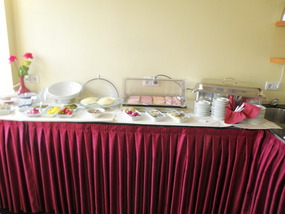
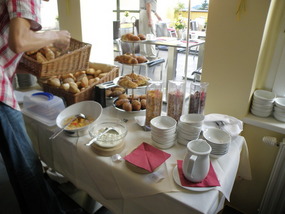
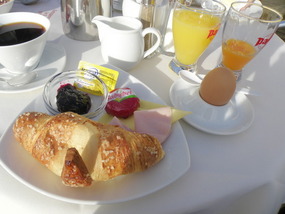
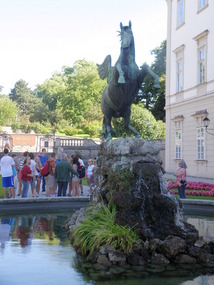
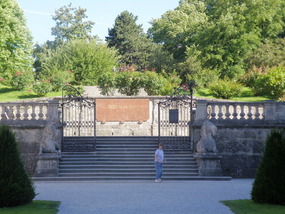
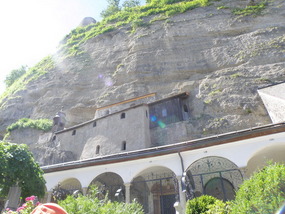
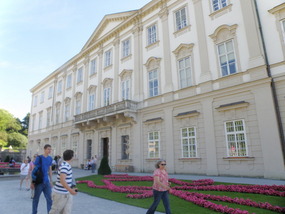
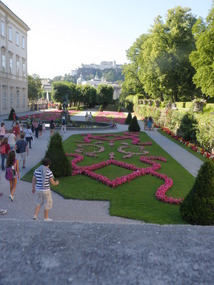
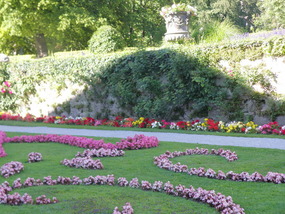
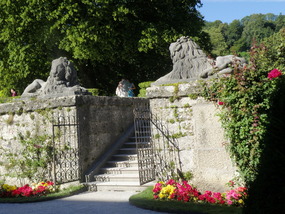
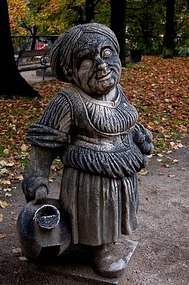
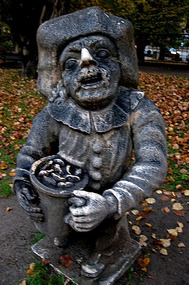
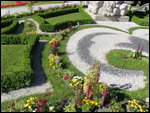
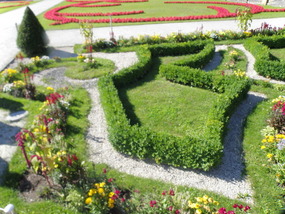


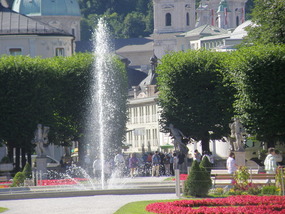
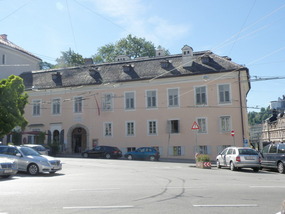
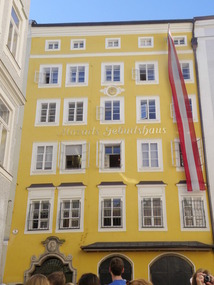
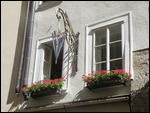
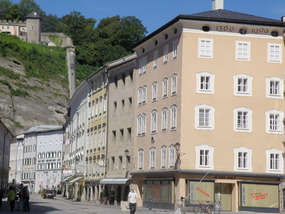

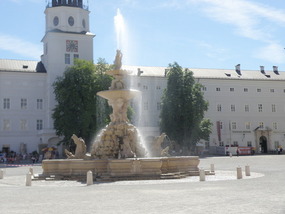
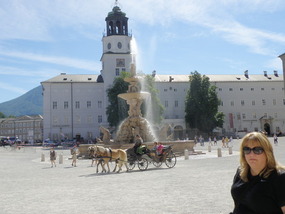
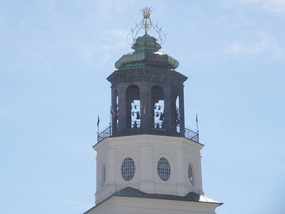
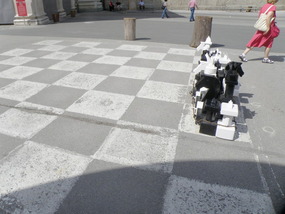
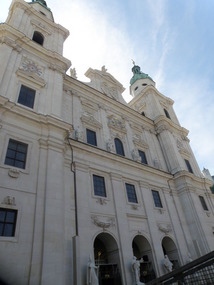
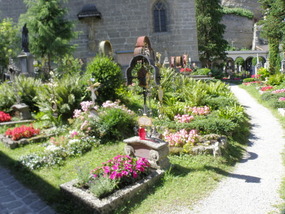
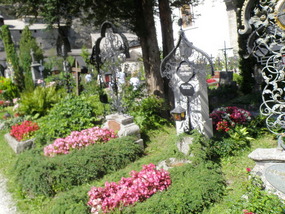
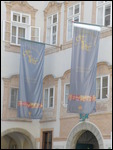
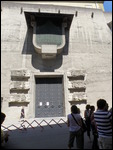
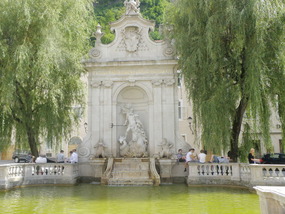
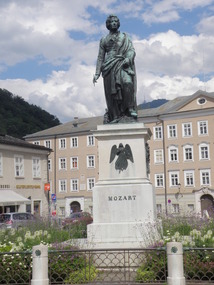



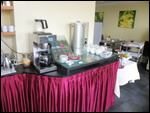
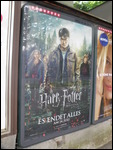
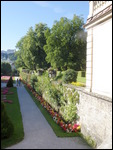
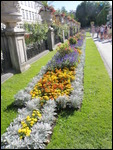
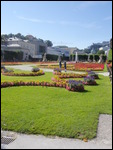
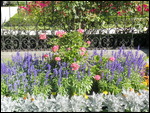
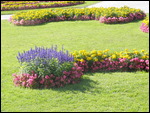
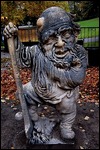
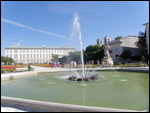
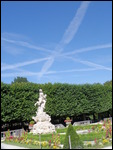
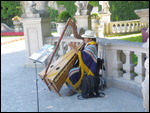
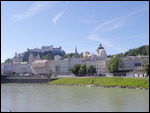
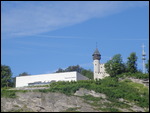
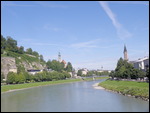
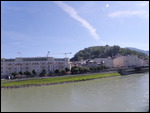
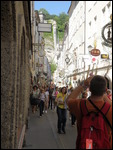
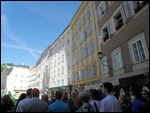
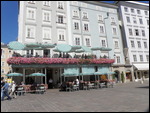
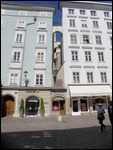

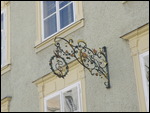
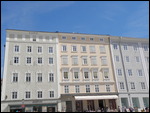
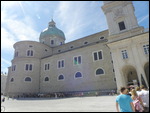

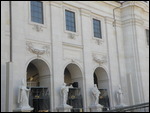
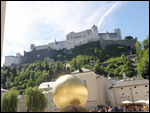
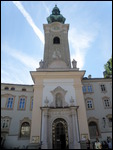
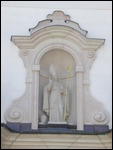
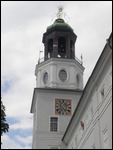
2025-05-22